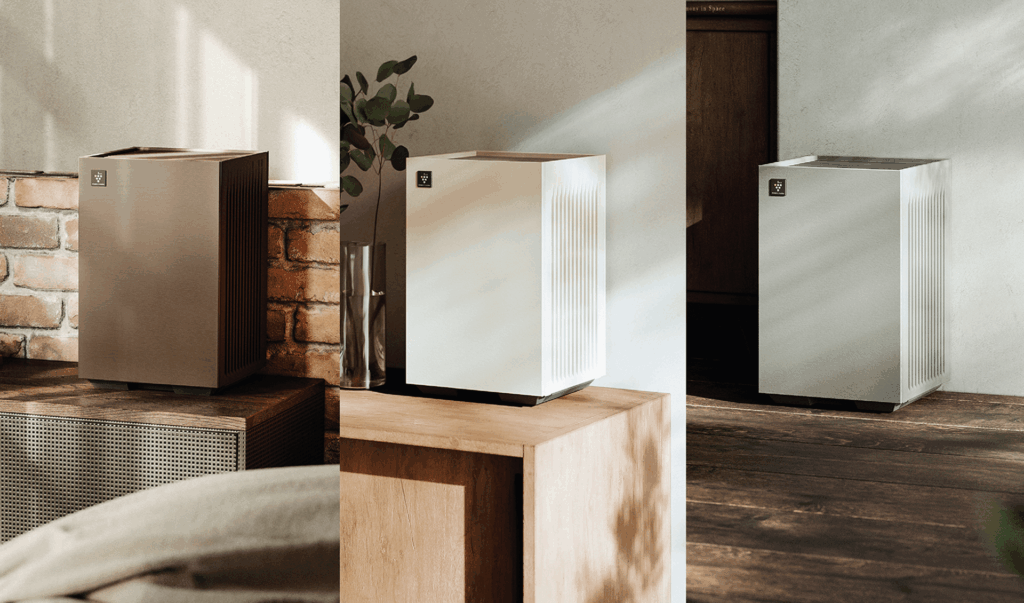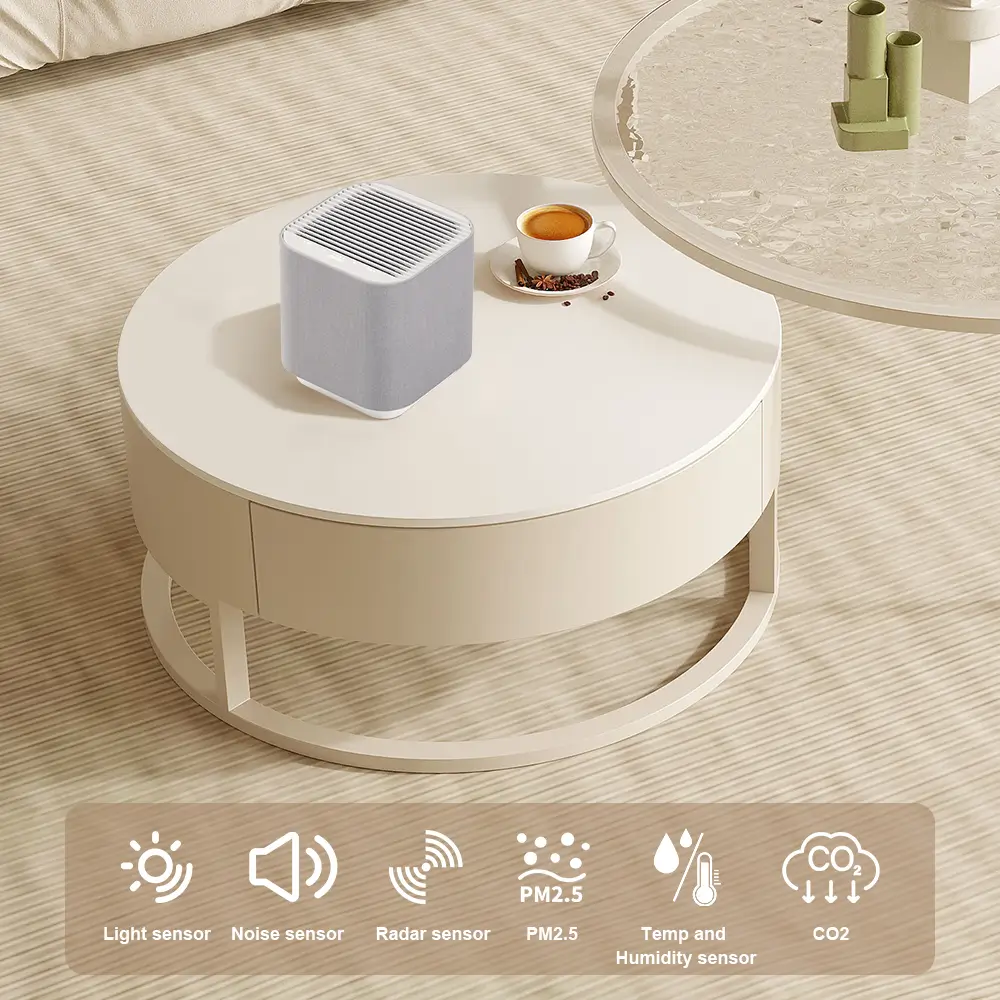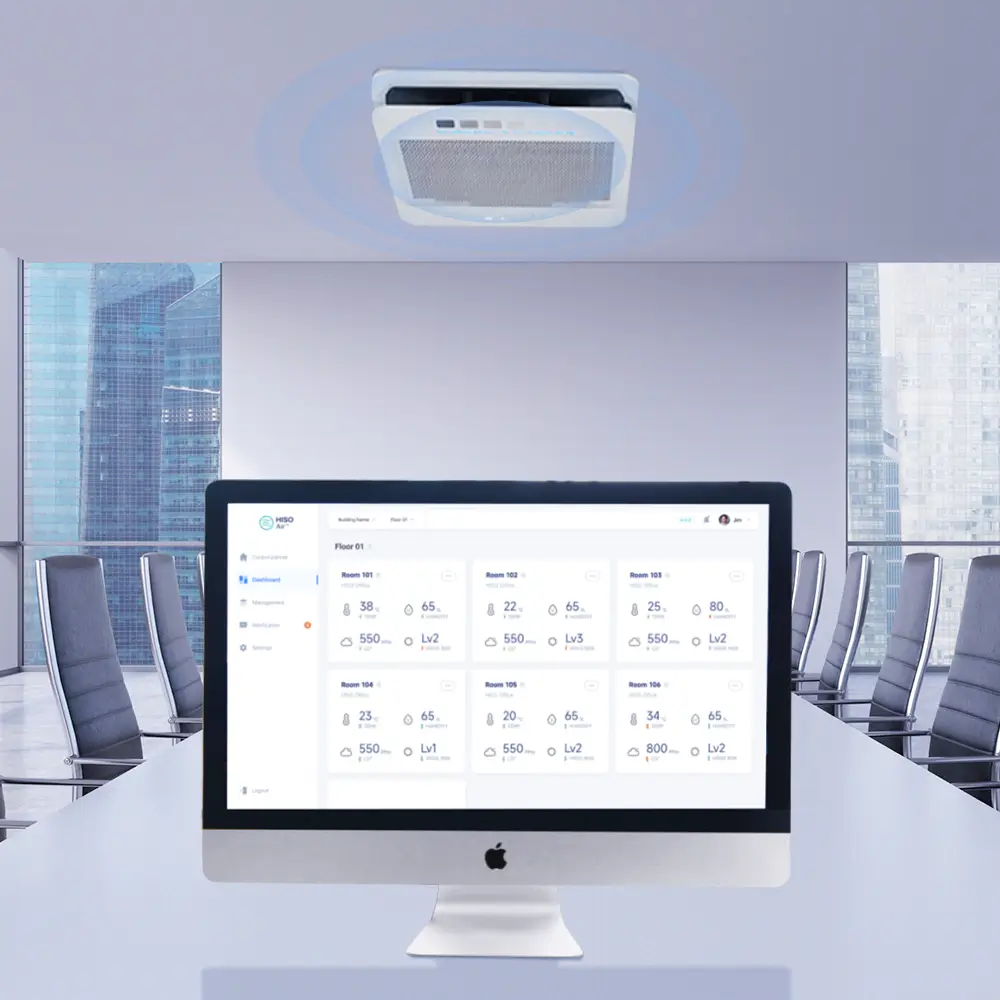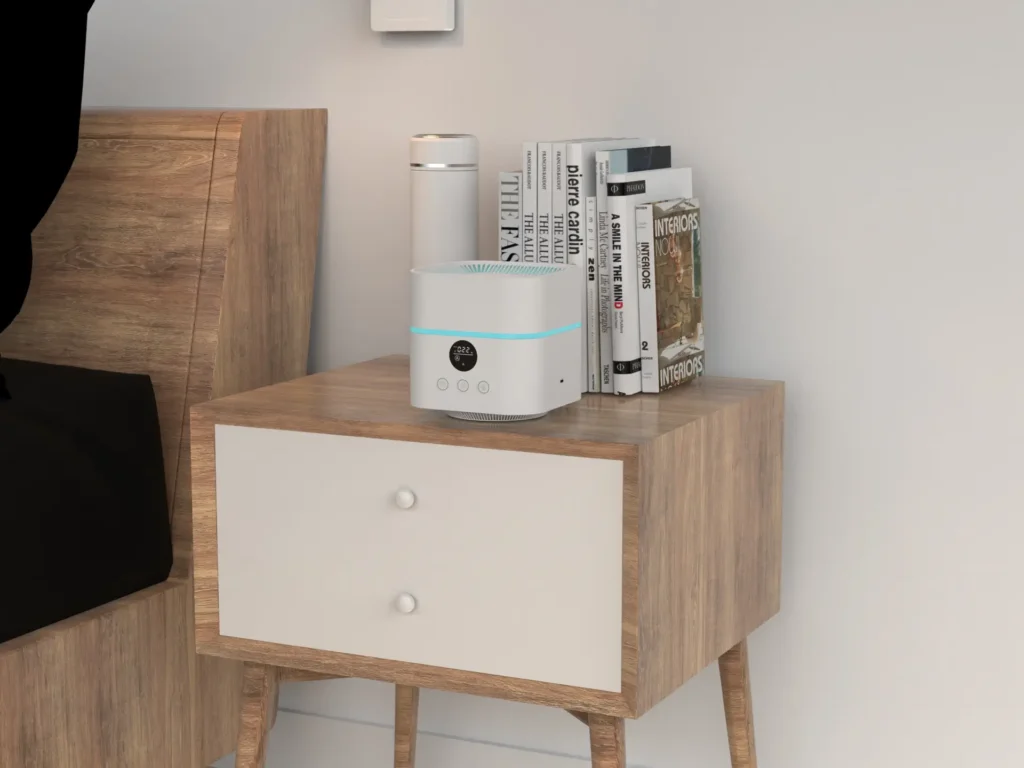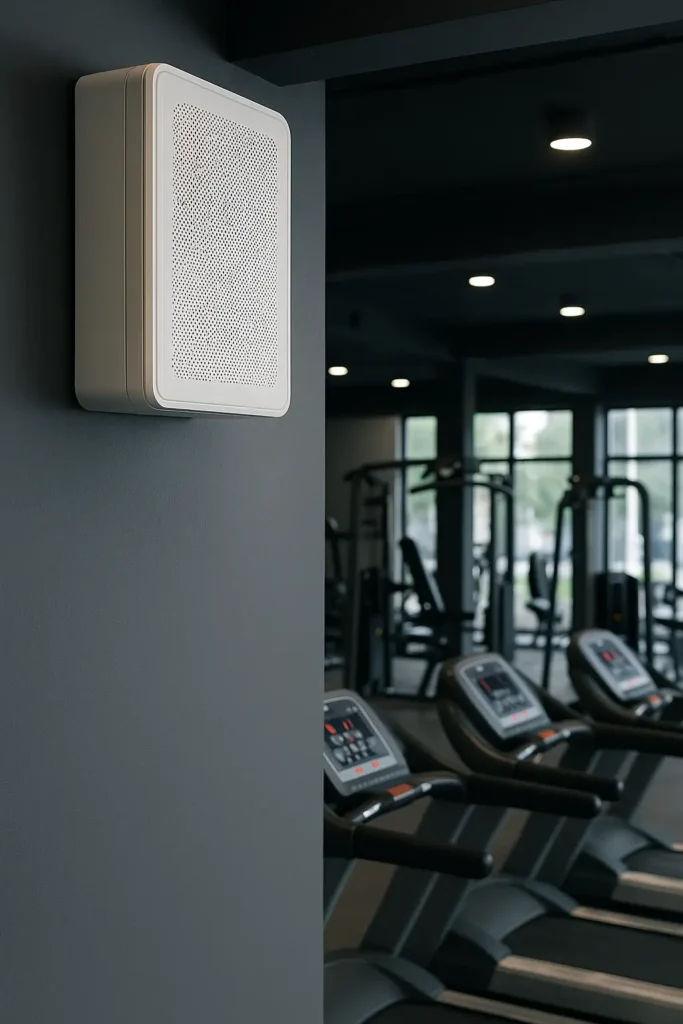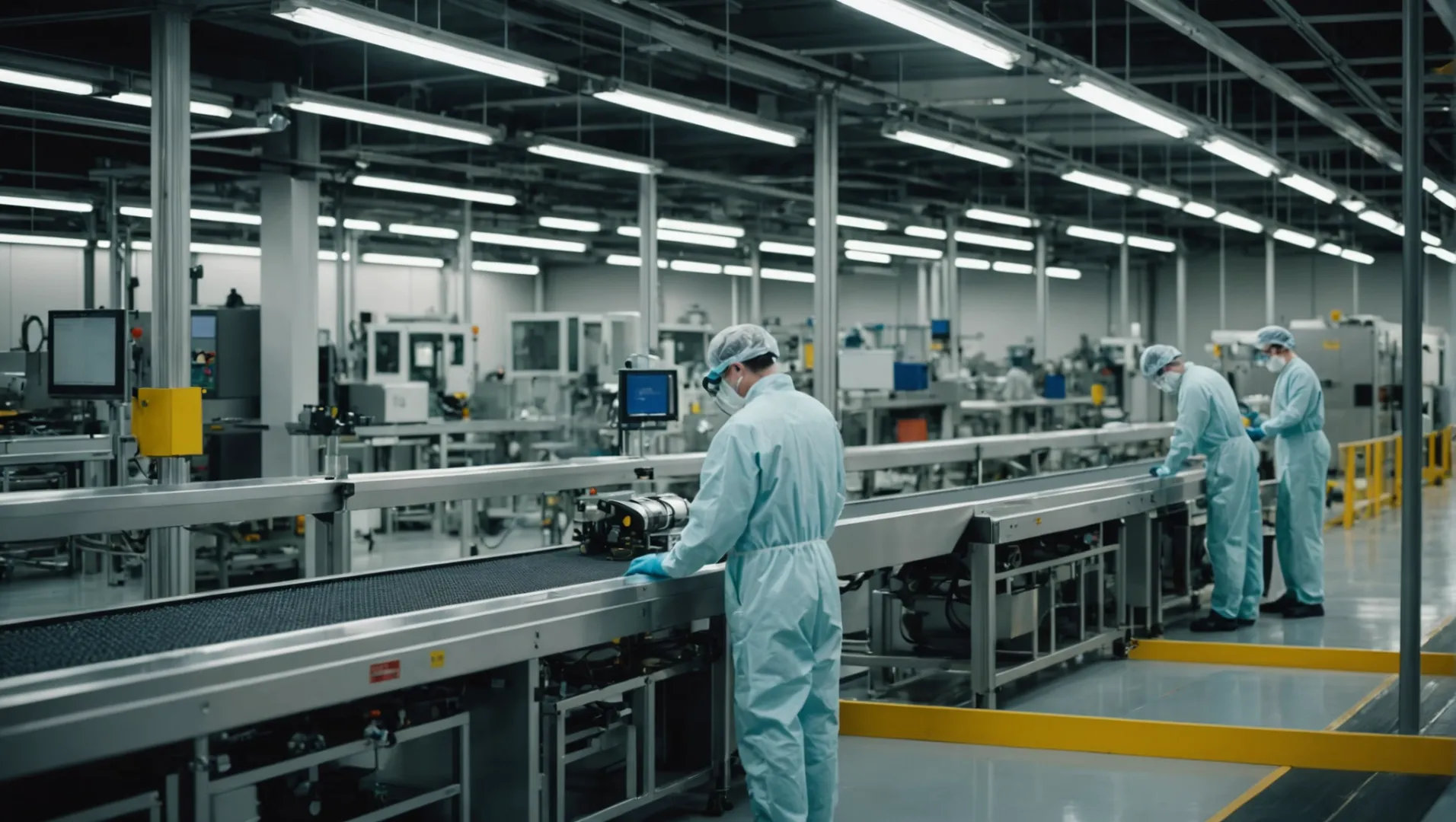
Stellen Sie sich vor, Sie betreten ein Krankenhaus, in dem sich jeder Atemzug wie ein Schritt in Richtung Sicherheit anfühlt. Das ist die Kraft von HEPA Filter!
HEPA Die Herstellung von Filtern ist für Erstausrüster von entscheidender Bedeutung, da sie die Luftqualität und die Einhaltung von Sicherheitsnormen gewährleistet und die Möglichkeit bietet, Filter für spezifische Anwendungen anzupassen. Diese Filter fangen schädliche Partikel ab, was sie in kritischen Umgebungen unentbehrlich macht.
Doch hinter ihrer bekannten Effizienz verbirgt sich eine Welt voller Feinheiten in der Herstellung. Erfahren Sie mehr über die Technologien und Anpassungsmöglichkeiten, die diese Filter auszeichnen.
HEPA-Filter fangen 99,97% der Partikel mit einer Größe von 0,3 Mikrometern oder mehr ab.Wahr
Dieser Wirkungsgrad ist ein Standard für HEPA-Filter und gewährleistet eine hohe Luftqualität.
Wie können HEPA Stellen Filter die Einhaltung von Gesundheitsvorschriften sicher?
HEPA Filter spielen eine entscheidende Rolle bei der Einhaltung strenger Gesundheitsvorschriften und sorgen in verschiedenen Branchen für eine saubere und sichere Umgebung.
HEPA Filter erfüllen die Gesundheitsvorschriften, indem sie mindestens 99,97% der in der Luft befindlichen Partikel mit einem Durchmesser von 0,3 Mikrometern auffangen und so eine saubere Luftqualität gewährleisten. Diese Fähigkeit macht sie unverzichtbar für Umgebungen, die strenge Luftreinheitsstandards erfordern, wie z. B. Krankenhäuser und Labore.
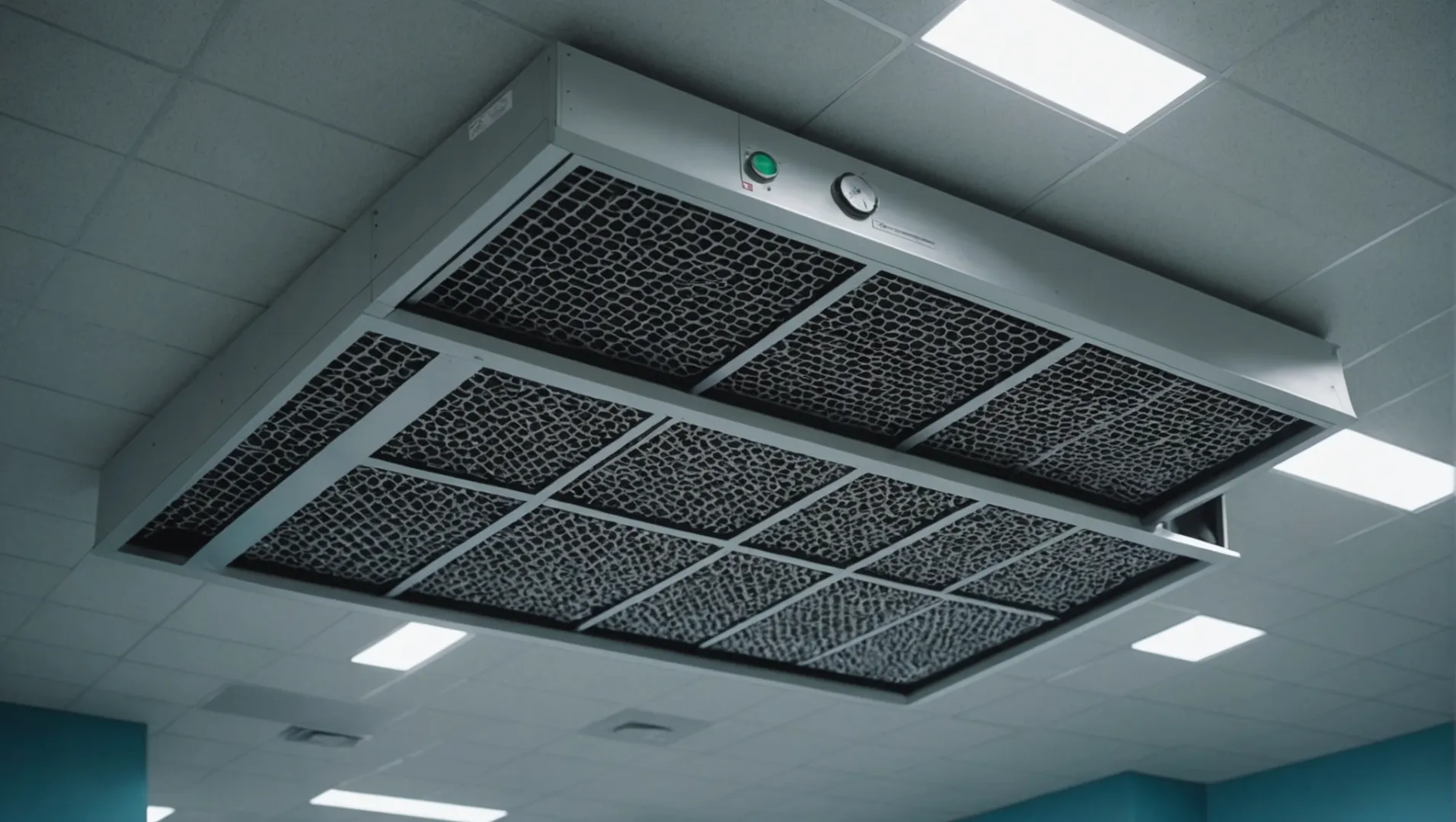
Verstehen HEPA Normen und Vorschriften
HEPA Filter müssen strenge Normen erfüllen, um sicherzustellen, dass sie Gesundheit und Sicherheit wirksam schützen. Die Effizienz von HEPA Die Fähigkeit der Filter, mikroskopisch kleine Partikel abzufangen, ist ein Schlüsselfaktor, der ihnen hilft, die strengen Vorschriften von Behörden wie der US-Umweltschutzbehörde (EPA) und der Weltgesundheitsorganisation (WHO) einzuhalten. Um diese Vorschriften zu erfüllen, müssen diese Filter die Fähigkeit nachweisen, 99,97% der in der Luft befindlichen Partikel bis zu einer Größe von 0,3 Mikrometern abzufangen. Diese Spezifikation ist entscheidend für Umgebungen wie Krankenhäuser, in denen die Übertragung von Krankheitserregern in der Luft minimiert werden muss.
Die Rolle der HEPA Filter in kritischen Umgebungen
In Sektoren wie dem Gesundheitswesen und der Pharmazie, wo die Aufrechterhaltung einer sterilen Umgebung entscheidend ist, HEPA Filter sind wesentliche Bestandteile von HLK-Systemen. Sie sorgen dafür, dass die Luft frei von Verunreinigungen ist, die die Sicherheit der Patienten oder die Integrität der Produkte gefährden könnten. Zum Beispiel in Operationssälen und Reinräumen, HEPA Filter tragen zur Aufrechterhaltung einer Umgebung bei, die strenge Sauberkeitsstandards erfüllt, indem sie potenziell schädliche Partikel herausfiltern.
Individuelle Anpassung an spezifische regulatorische Anforderungen
Anpassung von HEPA Filter ermöglicht die Einhaltung spezifischer Vorschriften für verschiedene Anwendungen. Hersteller wie HisoAir bieten angepasst HEPA Lösungen1 um die besonderen Anforderungen der OEMs zu erfüllen und sicherzustellen, dass jeder Filter die gesetzlichen Anforderungen der vorgesehenen Umgebung erfüllt. Dazu gehört die Entwicklung von Filtern mit mikrobiellen Einsatzmöglichkeiten oder die Integration nachhaltiger Materialien wie recyceltem Kaffeestaub.
Innovative Materialien und Technologien
Fortschritte in HEPA Filtermaterialien und -technologien tragen wesentlich zur Einhaltung der Gesundheitsvorschriften bei. Hocheffiziente Medienmaterialien verringern den Luftströmungswiderstand bei gleichbleibender Filtrationsleistung und ermöglichen so eine bessere Leistung ohne Beeinträchtigung der Energieeffizienz. Einige Hersteller verwenden jetzt antimikrobielle Beschichtungen, die das Wachstum von Bakterien auf der Filteroberfläche verhindern und so die Sicherheitsstandards dieser Filter weiter erhöhen.
Wenn sie diese Aspekte verstehen, können OEMs wählen HEPA Filter, die nicht nur den aktuellen Gesundheitsvorschriften entsprechen, sondern sich auch an künftige Veränderungen und technologische Fortschritte anpassen.
HEPA-Filter fangen 99,97% der 0,3-Mikrometer-Partikel ab.Wahr
HEPA-Filter sind so konzipiert, dass sie mindestens 99,97% der in der Luft befindlichen Partikel bis zu einer Größe von 0,3 Mikrometern zurückhalten.
HEPA-Filter werden in Krankenhäusern nicht verwendet.Falsch
HEPA-Filter sind in Krankenhäusern unverzichtbar für die Aufrechterhaltung einer sterilen Umgebung, indem sie schädliche Partikel herausfiltern.
Welche Anpassungsoptionen sind verfügbar für OEM HEPA Filtern?
OEMs haben einzigartige Bedürfnisse, die maßgeschneiderte Lösungen erfordern, insbesondere wenn es um HEPA Filter. Entdecken Sie die anpassbaren Optionen für OEM HEPA Filter.
OEM HEPA Filter bieten umfassende Anpassungsmöglichkeiten in Bezug auf Design, Materialien, Effizienz und anwendungsspezifische Merkmale und erfüllen so die unterschiedlichsten industriellen Anforderungen.
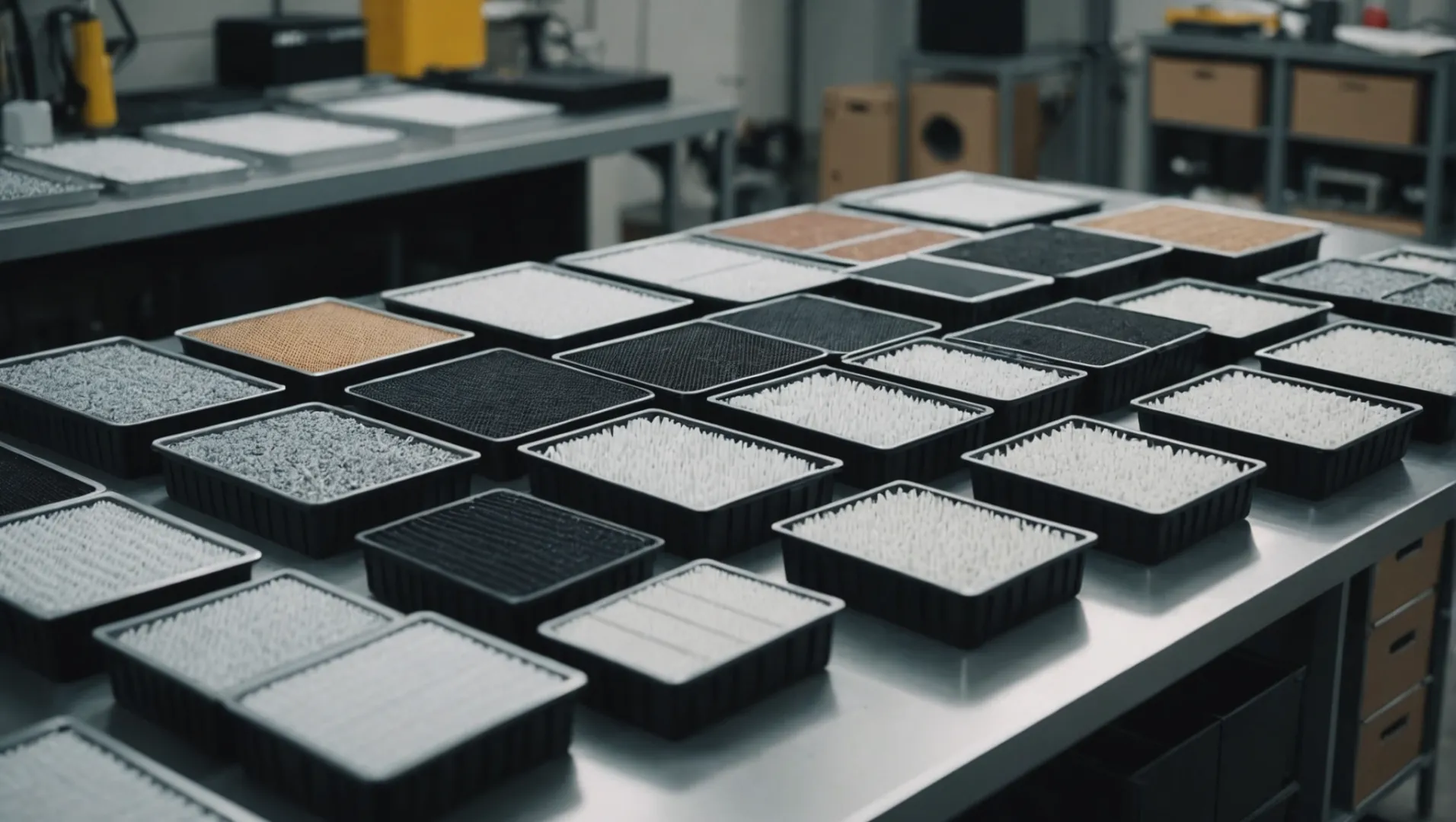
Maßgeschneidertes Design für unterschiedliche Anwendungen
OEMs können die Entwurf2 von HEPA Filter an spezifische Anwendungen anpassen, sei es für Luftreiniger in Wohngebäuden, HLK-Systeme oder Industrieanlagen. Diese Anpassung umfasst die Anpassung der Größe, der Form und des Rahmenmaterials des Filters, um die Kompatibilität mit der Endanwendungsumgebung zu gewährleisten.
| Gestaltungselement | Anpassungsoptionen |
|---|---|
| Größe & Form | Rechteckig, kreisförmig oder kundenspezifische Abmessungen |
| Material des Rahmens | Aluminium, Kunststoff, verzinkter Stahl |
| Dichtstoffe und Dichtungen | Schaumstoff, Gummi, Silikon |
Materialauswahl für verbesserte Leistung
Die Hersteller bieten Optionen zur individuellen Anpassung der Materialien3 verwendet in der HEPA Medien. Dazu gehören hocheffiziente Materialien, die einen geringen Widerstand und höhere Partikelabscheideraten bieten. Zu den innovativen Optionen gehört die Integration von recyceltem Kaffeestaub in die Medien, die nachhaltige Lösungen als Ersatz für herkömmliche Aktivkohle bieten.
Erweiterte Funktionen für spezielle Anwendungen
Für OEMs, die spezielle Anwendungen benötigen, z. B. im medizinischen oder industriellen Bereich, HEPA Filter können mit mikrobiellen Beschichtungen oder anderen technologiebasierten Merkmalen verbessert werden. Diese Innovationen tragen dazu bei, schädliche Krankheitserreger abzufangen und zu neutralisieren und die Einhaltung strenger Gesundheits- und Sicherheitsstandards zu gewährleisten.
- Mikrobielle Beschichtungen: Hemmung von Bakterien und Viren auf der Filteroberfläche.
- Antimikrobielle Medien: Eingebettet in Wirkstoffe, die Mikroben abtöten oder inaktivieren.
Effizienz und Widerstandsbilanzierung
Die Anpassung des Gleichgewichts zwischen Filtereffizienz und Luftstromwiderstand ist entscheidend für die Optimierung der Leistung in verschiedenen Umgebungen. Dieses Gleichgewicht stellt sicher, dass bei maximaler Filterung der Energieverbrauch überschaubar bleibt.
Mehr erfahren auf Effizienz und Widerstandsfähigkeit4 Bilanzierung, um zu verstehen, wie diese Faktoren die Filterleistung in verschiedenen Branchen beeinflussen.
OEM HEPA-Filter können für spezifische Anwendungen angepasst werden.Wahr
OEMs können Größe, Form und Materialien an individuelle Bedürfnisse anpassen.
HEPA-Filter können keine antimikrobiellen Eigenschaften aufweisen.Falsch
HEPA-Filter können mit antimikrobiellen Medien und mikrobiellen Beschichtungen ausgestattet sein.
Welche Fortschritte in HEPA Technologie prägt die Branche?
Entdecken Sie die bahnbrechenden Fortschritte in HEPA Technologie, die die Luftfiltration verändert und neue Branchenstandards setzt.
Jüngste Fortschritte in der HEPA Technologie konzentrieren sich auf mikrobielle Filter, nachhaltige Materialien und verbesserte Effizienz. Diese Innovationen verbessern die Luftqualität, indem sie mehr Schadstoffe auffangen, die Widerstandsfähigkeit verringern und umweltfreundliche Praktiken fördern.

Mikrobeninfusion HEPA Filter
Einer der wichtigsten Fortschritte in der HEPA Technologie ist die Integration von antimikrobiellen Wirkstoffen in die Filtermedien. Diese Innovation verbessert die Fähigkeit des Filters, Bakterien und Viren abzufangen und zu neutralisieren, was ihn ideal für Anwendungen im Gesundheitswesen und in Reinräumen macht.
Der Einsatz solcher Mittel verringert das Risiko des mikrobiellen Wachstums auf dem Filter selbst und verlängert seine Lebensdauer und Effizienz. Zum Beispiel, HisoAir5 bietet maßgeschneiderte HEPA Filter mit mikrobiellen Fähigkeiten, die auf verschiedene Anwendungen zugeschnitten sind und sowohl die Sicherheit als auch die Leistung verbessern.
Medien mit hohem Wirkungsgrad und geringem Widerstand
Eine weitere wichtige Entwicklung ist die Entwicklung von Medien mit hohem Wirkungsgrad und geringem Widerstand. Traditionell HEPA standen Filter oft vor dem Problem des Luftstromwiderstands, der sich auf den Energieverbrauch und die Systemleistung auswirken konnte. Neue Medienmaterialien ermöglichen jedoch einen größeren Luftstrom bei geringerem Druckabfall, so dass eine hervorragende Filtrationsleistung bei gleichzeitiger Optimierung des Energieverbrauchs gewährleistet ist.
Diese Verbesserungen machen es für OEMs möglich, Folgendes zu implementieren HEPA Filter für ein breiteres Spektrum von Geräten ohne Einbußen bei der Effizienz.
Nachhaltige Materialien in HEPA Herstellung
Nachhaltigkeit ist in vielen Branchen zu einem zentralen Thema geworden, so auch in der Luftfiltration. Jüngste Fortschritte in HEPA Technologie beinhalten die Verwendung umweltfreundlicher Materialien, wie z. B. recyceltem Kaffeestaub, um herkömmliche Aktivkohle bei der Geruchsbeseitigung zu ersetzen. Dies verringert nicht nur die Abhängigkeit von nicht erneuerbaren Ressourcen, sondern verbessert auch das Nachhaltigkeitsprofil der Produkte.
Die Verwendung von recycelten Materialien steht beispielsweise im Einklang mit globalen Initiativen zur Abfallvermeidung und zur Förderung umweltfreundlicher Produktionsverfahren.
Maßgeschneiderte Lösungen für vielfältige Anwendungen
Anpassungen in HEPA Die Filterherstellung ermöglicht es OEMs, auf spezifische Bedürfnisse einzugehen, sei es für die Luftreinigung im Wohnbereich, in der Industrie oder im medizinischen Bereich. Durch das Angebot maßgeschneiderter Lösungen können die Hersteller unterschiedliche gesetzliche Normen und Leistungsanforderungen in verschiedenen Sektoren erfüllen.
Die Fähigkeit zur individuellen Anpassung geht über Größe und Form hinaus und umfasst auch die Auswahl spezieller Materialien und Technologien, die den besonderen Umgebungsbedingungen und Kontaminationsproblemen gerecht werden.
Diese Fortschritte zeugen von dem Engagement, nicht nur die Luftqualität zu verbessern, sondern sich auch an die sich wandelnden Anforderungen der verschiedenen Branchen anzupassen. Durch die Nutzung dieser innovativen Technologien können OEMs sicherstellen, dass ihre Produkte weiterhin an der Spitze der Luftfiltrationslösungen stehen.
HEPA-Filter verwenden jetzt recycelten Kaffeestaub zur Geruchsbeseitigung.Wahr
Recycelter Kaffeestaub ist eine umweltfreundliche Alternative zu herkömmlichen Materialien.
Mit Mikroben durchsetzte HEPA-Filter können Bakterien nicht neutralisieren.Falsch
Diese Filter sind speziell dafür ausgelegt, Bakterien abzufangen und zu neutralisieren.
Warum ist nachhaltige Entwicklung wichtig in HEPA Filterherstellung?
Die Nachhaltigkeit verändert die Industrie, und HEPA Die Filterherstellung bildet da keine Ausnahme. Entdecken Sie, warum nachhaltige Praktiken in diesem Bereich so wichtig sind.
Nachhaltige Entwicklung in HEPA Die Herstellung von Filtern ist wichtig, um die Umweltbelastung zu verringern, die Produktinnovation zu fördern und die Nachfrage der Verbraucher nach umweltfreundlichen Lösungen zu erfüllen. Durch die Verwendung recycelter Materialien und energieeffizienter Verfahren können die Hersteller umweltfreundlichere Produkte herstellen, ohne Kompromisse bei der Leistung einzugehen.
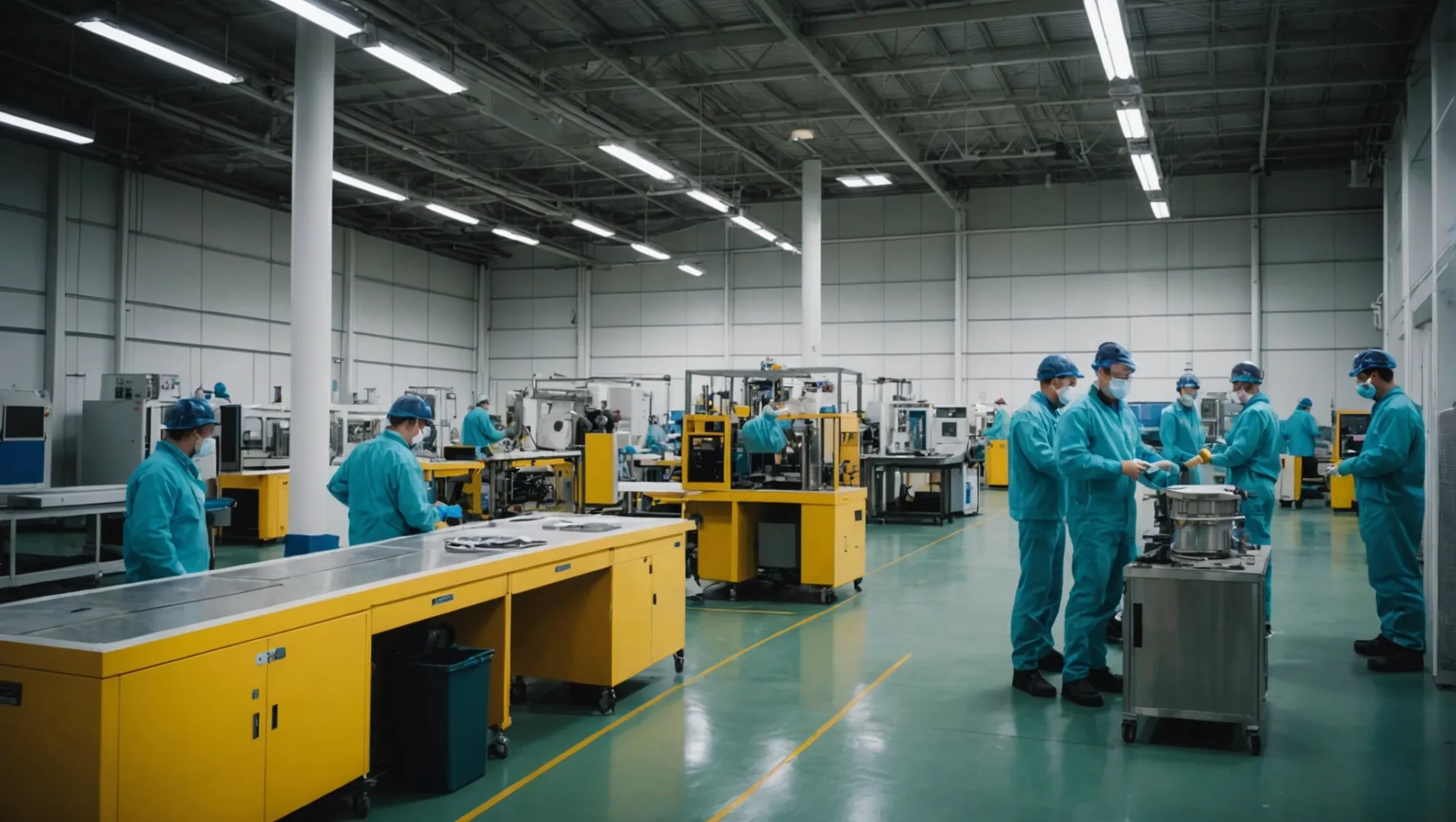
Die Umweltauswirkungen der traditionellen Fertigung
Traditionell HEPA Die Herstellung von Filtern ist mit Prozessen verbunden, die zu erheblichen Umweltbelastungen führen können. Dazu gehören der Verbrauch nicht erneuerbarer Ressourcen und die Entstehung von Abfällen während der Produktion. Durch die Umstellung auf eine nachhaltige Entwicklung können die Hersteller diese Auswirkungen mindern und zu einem gesünderen Planeten beitragen.
Innovative Materialien in HEPA Filter
Einer der aufregendsten Fortschritte in der nachhaltigen HEPA Filterherstellung ist die Verwendung von recycelte Materialien6. Zum Beispiel kann die Einarbeitung von recyceltem Kaffeestaub in HEPA Medien bietet eine praktikable Alternative zu Aktivkohle. Diese Innovation reduziert nicht nur den Abfall, sondern erhält auch die Fähigkeit des Filters, Gerüche wirksam zu neutralisieren.
Erfüllung der Verbrauchernachfrage nach umweltfreundlichen Produkten
Da das Bewusstsein für Umweltfragen wächst, suchen die Verbraucher zunehmend nach umweltfreundlichen Produkten. Durch die Integration nachhaltiger Praktiken, HEPA Die Filterhersteller können diese Nachfrage befriedigen und ihre Produkte für umweltbewusste Kunden attraktiver machen. Dieser Wandel eröffnet nicht nur neue Marktchancen, sondern verbessert auch den Ruf der Marke.
Vorteile energieeffizienter Fertigungsprozesse
Energieeffizienz ist ein Eckpfeiler der nachhaltigen Produktion. Die Einführung energiesparender Technologien in HEPA Die Filterproduktion kann den CO2-Fußabdruck und die Betriebskosten erheblich reduzieren. Diese Praktiken stellen sicher, dass sich die Umweltvorteile über den gesamten Produktlebenszyklus erstrecken, von der Herstellung bis zur Endnutzung.
Die Rolle der nachhaltigen Entwicklung bei der Innovation
Bei der Nachhaltigkeit geht es nicht nur um die Verringerung von Schäden - sie ist auch ein Katalysator für Innovationen. Die nachhaltige Entwicklung fördert die Erforschung neuer Materialien und Technologien, die zu leistungsfähigeren und langlebigeren Filtern führen. Dieser kontinuierliche Verbesserungszyklus ist entscheidend, um in einem sich schnell entwickelnden Markt wettbewerbsfähig zu bleiben.
Nachhaltige HEPA-Filter verwenden recycelten Kaffeestaub.Wahr
Recycelter Kaffeestaub wird als Alternative zu Aktivkohle verwendet.
Die traditionelle HEPA-Herstellung verringert die Umweltbelastung.Falsch
Herkömmliche Verfahren verbrauchen nicht-erneuerbare Ressourcen und erzeugen Abfall.
Schlussfolgerung
HEPA Filter sind für die Aufrechterhaltung der Luftqualität und Sicherheit in kritischen Umgebungen unerlässlich. Wenn OEMs ihre Bedeutung und ihre Anpassungsmöglichkeiten erkennen, können sie die Zuverlässigkeit ihrer Produkte und die Einhaltung von Vorschriften verbessern. Erwägen Sie die Integration von fortschrittlichen HEPA Lösungen für optimale Leistung.
-
Entdecken Sie, wie HisoAir maßgeschneiderte HEPA-Filterlösungen für die Einhaltung..: Maßgeschneiderte, hochleistungsfähige Lösungen: Wir bieten erstklassige Luftreiniger, die auf die Bedürfnisse jedes einzelnen Kunden zugeschnitten sind, um eine hervorragende Luftqualität zu gewährleisten und die ... ↩
-
Erfahren Sie mehr über die verschiedenen Designelemente, die für spezifische Anwendungen angepasst werden können: Ihre kundenspezifischen HEPA-Filter werden dann mit AutoCAD und SolidWorks konstruiert, um eine strömungsdynamische 3D-Darstellung zu erstellen. Wir fertigen dann einen Prototyp mit ... ↩
-
Entdecken Sie Materialien, die Leistung und Nachhaltigkeit verbessern: Wir können diesen HEPA-Filter in Sondergröße für Sie herstellen. Kundenspezifischer Bereich. Wirkungsgrad, Von H10 bis H14, U15. Rahmenmaterial, Metall oder Spanplatte. Filtermaterial ... ↩
-
Verstehen Sie die Kompromisse zwischen Filtrationseffizienz und Luftstromwiderstand..: HEPA-ähnliche Filter haben in der Regel einen geringeren Wirkungsgrad und fangen Partikel bis zu einer Größe von 2,5 Mikrometern auf, die möglicherweise nicht so effektiv ... ↩
-
Erfahren Sie, wie antimikrobielle Eigenschaften die Filtereffizienz und Lebensdauer verbessern: Antibakterieller und antiviraler HEPA-Filter. Modell: F060. Filterzusammensetzung: antibakterieller und antiviraler HEPA-Filter + schwarzer Papprahmen + T5-Dichtungsstreifen. ↩
-
Erfahren Sie, wie recycelte Materialien die Umweltfreundlichkeit und Filterleistung verbessern: Der briiv-Luftfilter wird vollständig aus natürlichen Materialien wie Biokunststoffen und recycelbaren Materialien wie Pappe und Glas hergestellt, mit plastikfreien, natürlichen ... ↩


